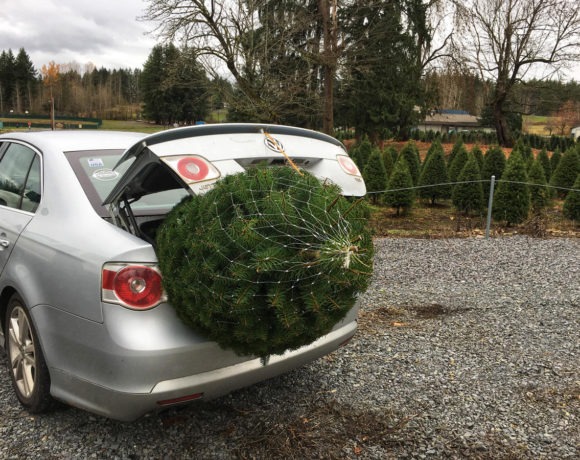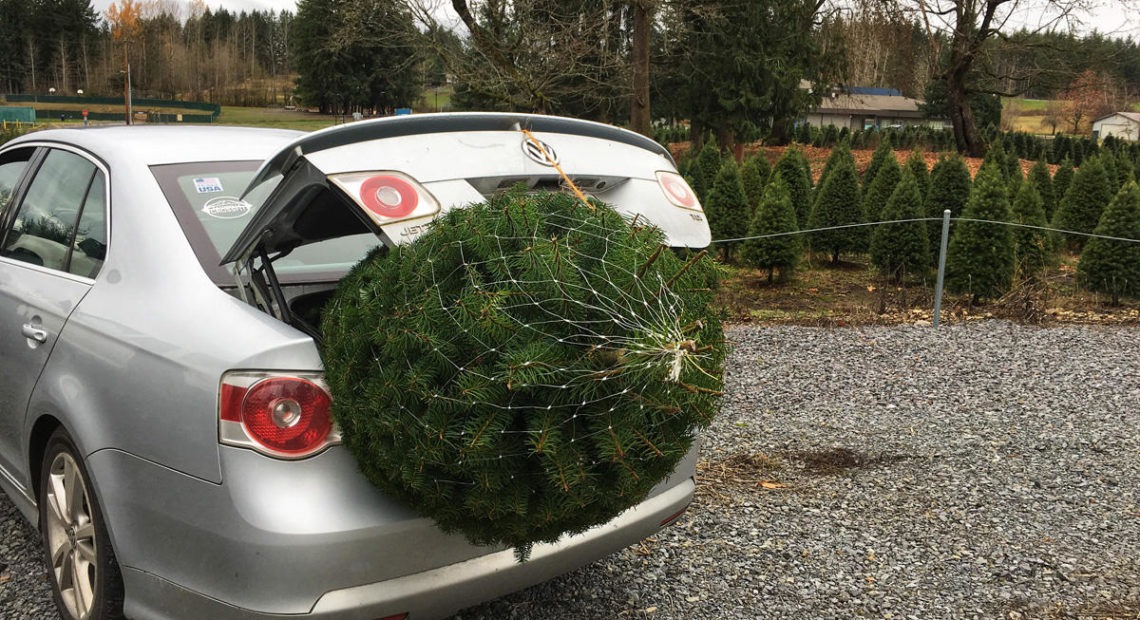
Western Seedling Shortage: Your Future Christmas Tree Might Be Hard To Find
Listen
You might be in the market for a Christmas tree right about now, but have you thought about what type of Christmas tree you want in eight years?
Believe it or not, it might be hard to find one. That’s because of a tree seedling shortage happening right now across the West.
The repercussions are being felt across the region, including by Darryl Smith, the owner of S&S Evergreen U-Cut. He estimates he’ll sell about 200 Douglas firs and Noble firs in the next couple weeks. He’s just not sure how he’s going to find 200 replacement seedlings for a Christmas eight years down the road.
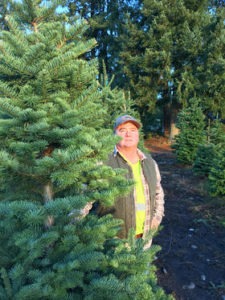
Darryl Smith is the owner of S&S Evergreen U-Cut outside of Eatonville, Washington. After this year’s customers cut down around 200 Christmas trees, he doesn’t have enough seedlings to plant back.
“Right now all you can do in this business is keep plugging along,” Smith said. “I don’t want to just give up. I got enough trees to get me by for a couple more years or so and then hopefully we’ll have the seedling issue back under control.”
Smith said he ordered his seedlings from his nursery a year in advance, but the operation said they might not have as many, or any young trees for him this year.
“Last year was the first year I had any problem,” Smith said. “And sounds like this year is going to be a problem too.”
It’s a common story this year in Washington, Oregon, California and beyond. There aren’t enough baby trees to plant back what people want to cut down or what has burned in recent wildfires. It’s a seedling shortage.
A dearth of seedlings
There are many reasons for the shortage: For one, weather. There have been two years of summer drought and an exceptionally wet spring this year that killed a lot of seedlings. Timber managers are having to replant areas with young trees that were already planted because of the high mortality.
During the economic downturn, a few major Northwest seedling nurseries went out of business. Now, with the economy improving, demand is up on an already tightened supply. More people can afford fresh Christmas trees and more lumber is being cut for building. And with severe wildfires across the West, all those burnt areas need replanting as well.
A nationwide seedling shortage
The seedling shortage appears to be nationwide, although it’s more acute in states like in Washington and Oregon. That’s according to Diane Haase, the head seedling nursery expert for the USDA Forest Service in the West and Pacific islands.
Making the shortage worse is the fact that many state-run tree nurseries have been shuttered. They used to grow seedlings for small landowners or people wanting smaller batches of trees—like 100 to 1,000—that are harder to get from commercial growers.
Haase said the state of California is even planning to reopen a government-run seedling nursery that had been closed, to try and alleviate some of the pressures on small landowners and forest-fire scarred areas.
Smaller buyers can also go to an online marketplace called “Forest Seedling Network” where people post seedlings for sale and where small buyers can band together to buy larger lots.
According to Bob McNitt, who runs the network, the site has been quiet lately. Very few people are posting seedlings for sale.
Long lines for seedings
During the Great Recession, many nurseries plowed under seedlings that they couldn’t sell, and they cut back the number of seedlings in their inventories. So now, there are very few un-contracted trees on the open market.

Weyerhaeuser’s nursery in Oregon has canceled its second seedling sale planned for 2018 because they don’t have many extra trees to sell. CREDIT WEYERHAEUSER
At the annual public Weyerhaeuser nursery sale in Aurora, Oregon, hundreds of people lined up hours in advance of the 8 a.m. opening last year. It looked like a rock concert.
When the doors opened, customers dove in for the few hundred small trees available. They sold out within hours, according to Mark Triebwasser, the nursery manager.
Usually, that giant nursery has two sales per year, but it’s already cancelled its second one planned for later in 2018, because of the dearth of extra seedlings. Since there has been a major uptick in logging, Weyerhaeuser and other major timber companies are keeping more of their seedlings for their own use.
Making seedlings while the sun shines
Mike Gerdes owns Silvaseed Company in the small city of Roy, Washington, outside Tacoma. It’s a major supplier of evergreen seed and seedlings worldwide.
Much of their valuable Northwest seed goes to European timber operations. But this year, some of his customers will be disappointed:
“There are people that just aren’t going to get what they need,” Gerdes said.
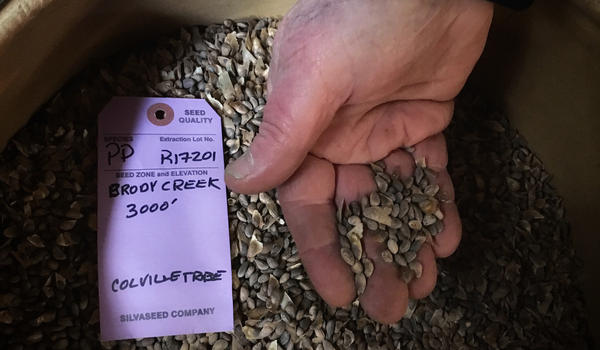
Mike Gerdes picks up a handful of carefully-collected tree seed. He has vast networks of specialists who collect seed across the Northwest. Trees only produce cones for seeds once every 7-10 years. CREDIT ANNA KING / NORTHWEST NEWS NETWORK
Gerdes maintains a complex seed collection and two dozen sprawling greenhouses. “I wish I had a couple more million seedlings available,” he said. “I get calls every week—people looking for 20,000 seedlings, 50,000, even 100,000 seedlings. And they’re just not there.”
Gerdes’ greenhouses are entirely full. And it takes one year in greenhouse and one year out on the open farm for a seedling to be ready to plant into the landscape. Gerdes has even contracted with a California nursery to help him increase his seedling stock, and he’s pre-selling seedlings clear into 2019 because his regular customers want to secure their trees further and further ahead.
It all starts with the seed
One big problem has been a pure shortage of seed. Trees produce massive numbers of cones for seed only about every seven to 10 years. So there’s been a shortage of seeds until just last fall when a good crop came on.
Gerdes explained that a tree, isn’t a tree, isn’t a tree. A coastal tree is very different from a high Cascades tree. And one can’t survive planted in the wrong spot with the wrong elevation or rainfall.
To grow about 9 million seedlings per year, Gerdes has vast networks of families who for many generations have made their living collecting things from forests. They work throughout the region to source specific seed from those unique zones. And each zone of tree seed has to be kept carefully separated and planted back only to appropriate areas.
Gerdes said that’s why most trees are grown on a two-year contract—with very specific seed collected from suitable areas for each job.
Gerdes stores seed for sometimes 15 years in a massive freezer.
Nowhere to grow
Gerdes rolls open a trundling greenhouse door. A whoosh of air and a loud fan blasts us upon stepping inside.
There’s a sea of soft green noble firs yawning out beyond. Silken spiderwebs form hammocks between the tops of the young trees growing in neat rows of styrofoam blocks.
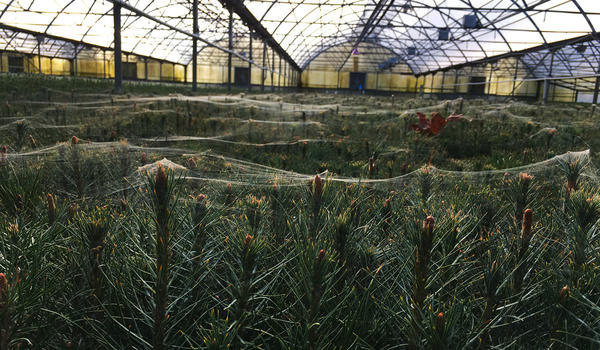
Spiders weave webby hammocks amid the top boughs of evergreen seedlings in a nursery. There’s a massive seedling shortage across the West and the nation.
CREDIT ANNA KING / NORTHWEST NEWS NETWORK
Gerdes has seen these seedling booms before. It’s a cycle that closely relates with the economy and building. Every 10 to 15 years.
He likes to hold his prices pretty steady so his customers buy in the booms, but also the bust years.
And Gerdes said growing trees is very complex. There are just a few experts left who do it, and even fewer who can weather the bad years. Gerdes learned from forestry school and from his father—who learned from a family before him. Gerdes and his brother, David, run the business now.
The pressure on seedlings isn’t likely to let up soon, according to Gerdes. It’s not a business that can pop up quickly or nimbly expand to meet this fresh demand.
“This business was actually started in 1889,” Gerdes said. “There is not too many of us around who do it anymore.”
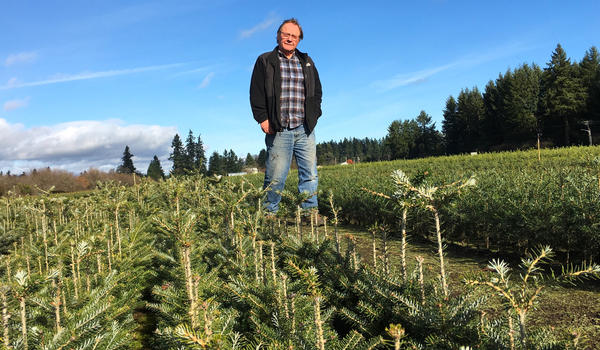
Mike Gerdes owns Silvaseed Company in Roy, Washington, with his brother David. It’s a complex international family business that’s been handed down. It’s hard for new nursery operations to come online quickly–because of the specialized knowledge required.
CREDIT ANNA KING / NORTHWEST NEWS NETWORK
EDITOR’S NOTE: In full disclosure, Anna King worked for Silvaseed Company for brief stints during her college years.
Related Stories:
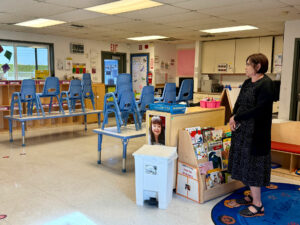
Hundreds of children affected by sudden Head Start closures in Central Washington
More than 400 children in Central Washington are without educational support services after federal funding did not arrive. Dozens of staff members were also dismissed.
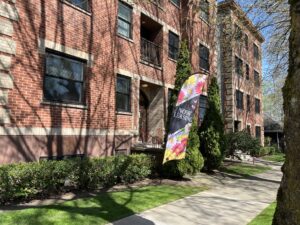
Study in the works on effects of Tacoma’s Landlord Fairness Code
Tenants and landlords will soon have a chance to voice their opinions on how Tacoma’s new tenant protections have impacted them.
It’s been nearly two years since voters here approved the Landlord Fairness Code. The regulations, ranging from a $10 cap on late fees to a ban on economic evictions during certain times of the year, were an attempt to address increased rents and evictions by Tacoma For All, an advocacy organization for tenants and working class Tacomans.

Kennewick finds ‘forever chemicals’ in its drinking water for the second spring in a row
For the second spring in a row, Kennewick has found “forever chemicals” in its drinking water that are above Washington state’s standards.

